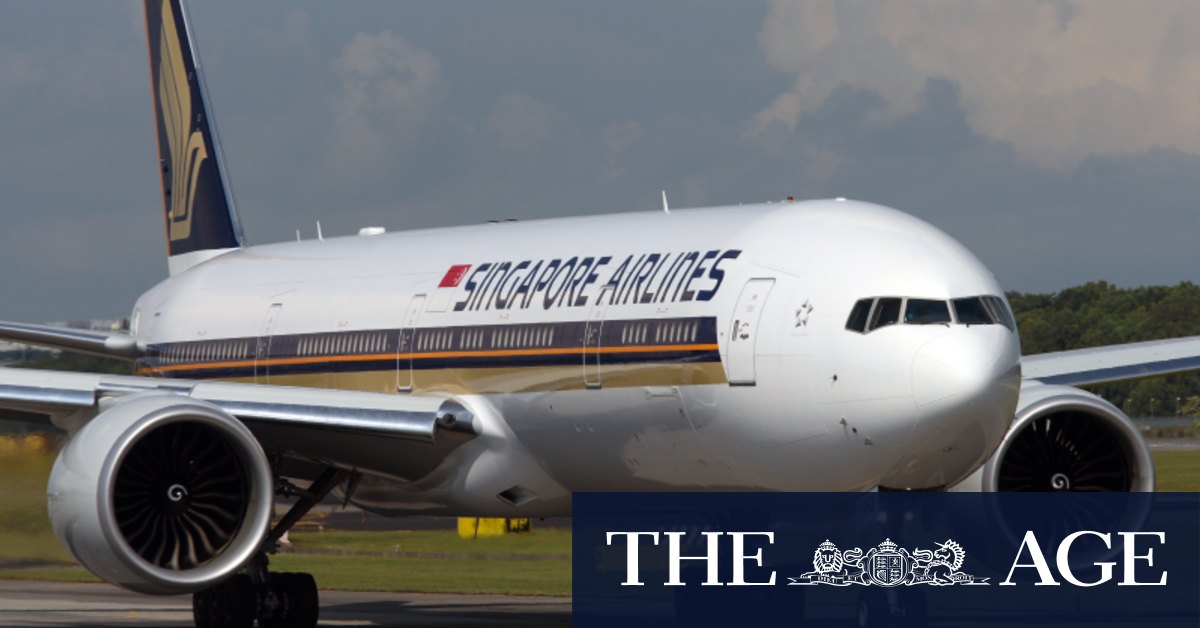loading
The plane hovered at 31,000 feet for just under 10 minutes before quickly descending and landing in Bangkok in just under half an hour.
Passenger Andrew Davies, from Lewisham, south-east London, said there was little warning before the turbulence.
“The seat belt sign came on, I put my seat belt on immediately and then the plane just went down,” he said.
Davies posted photos on X of the flight disembarking and the waiting area at Bangkok airport for the unharmed passengers.
“[There were] A lot of people were injured, including air stewards who were stoic and did everything they could,” Davies said.
“Head lacerations, bleeding ears. A lady was screaming in pain with back pain.”
Describing the scene as “surreal”, he said coffee and water splattered the ceiling as the plane fell.
“One of the Singapore Airlines crew said it was by far the worst in her 30 years of flying,” he said. “[The] the lesson is to wear your seat belt at all times.”
Dzafran Azmir, a 28-year-old student on board the flight, described how the plane began to “tilt” and “shake”.
“I started preparing myself for what was happening, and suddenly there was a very dramatic fall, so everyone who was sitting and not wearing a seat belt was immediately thrown to the roof,” Azmir said.
“Some people hit their heads on the baggage cabins at the top and dented them, hit the places where the lights and masks are and broke it right off.”
Singapore's Transport Minister Chee Hong Tat said that in addition to Singapore Airlines, the Ministry of Transport, the Ministry of Foreign Affairs, the Civil Aviation Authority of Singapore and airport officials in Changi are supporting the affected passengers and their families.
“My deepest condolences to the family of the deceased,” he added.
Southeast Asia is currently experiencing a series of tropical storms. The London telegraph reported that a British Airways flight was last week forced to return to Singapore after severe turbulence.
A spokesman for the Department of Foreign Affairs said the Australian embassy in Bangkok and the high commission in Singapore were making urgent inquiries to find out if any Australians had been affected by the incident.
Affected Australians should contact the Australian Government's 24-hour Consular Emergency Center on +61 2 6261 3305 from overseas or 1300 555 135 from Australia.
Rare deaths in turbulence-related incidents
Fatalities are extremely rare in turbulence incidents, especially during trips at cruise altitude which is considered the most stable part of the trip. Carriers routinely ask passengers to keep their seat belts buckled, even when the warning signs have gone off.
Still, turbulence-related air crashes are the most common type, according to a 2021 study by the National Transportation Safety Board. From 2009 to 2018, the US agency found that turbulence accounted for more than a third of reported air accidents, and most resulted in one or more serious injuries, but no serious damage to the aircraft.
Between 2014 and 2018, around 240 severe turbulence events were reported to European manufacturer Airbus, with injuries to passengers and crew on 30% of long-haul flights where such events were reported and on 12 % of short-haul flights, according to an information document.
A study by the University of Reading in the UK and published in 2023 said that clear air turbulence, which is invisible, had increased with climate change. While the United States and the North Atlantic had experienced the largest increase, routes through Europe, the Middle East and the South Atlantic had also experienced a significant increase in turbulence.
What causes turbulence?
Turbulence can be caused by a number of factors, including thunderstorms and jet streams, or “rivers” of fast wind in the upper troposphere.
Mountains and islands can also disrupt the flow of wind and generate oscillating waves in the atmosphere that cause turbulence. Rising packets of hot air can also cause aircraft to shake in what is known as convective turbulence.
Reuters, AP, Bloomberg




